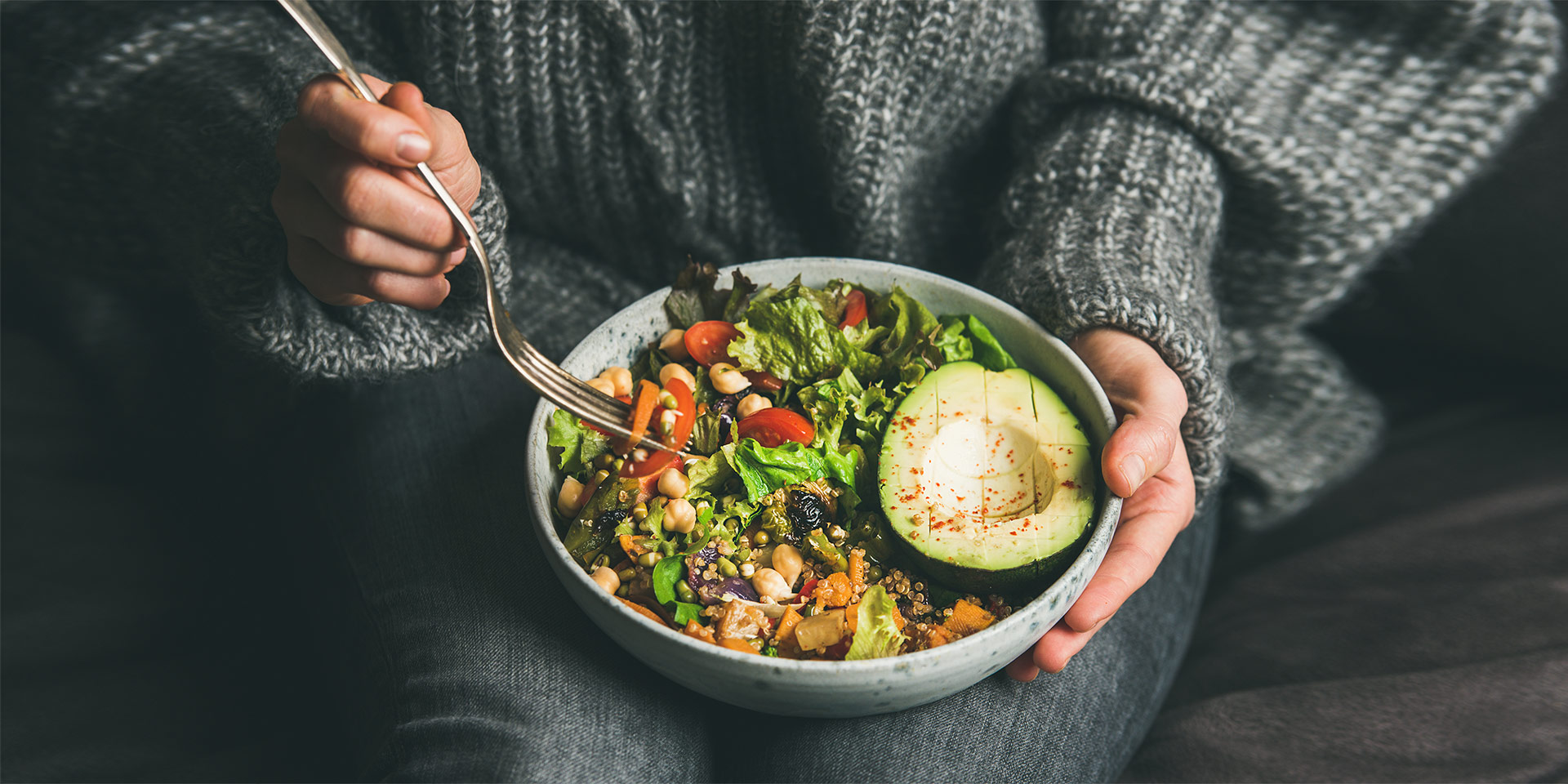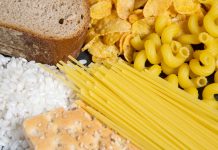What would it be like to eat 8,6 kilograms of food in a single meal? Although it seems absurd to try and fit so much food into one’s stomach, a 23-year old model from London conducted just such an experiment in 1981.
The girl was in the habit of not eating anything for 3 to 4 days on end, but following up her days of starvation by gorging herself. One of these culinary orgies turned out to be fatal. She ended up in the hospital with severe abdominal distension, after eating 200 grams of steak, 600 grams of liver, 900 grams of kidney, 500 grams of mushrooms and 900 grams of carrots the evening before. As if that wasn’t enough, she did not skip dessert, feasting on 10 peaches, four pears, two apples, four bananas, 900 grams of plums and 900 grams of grapes. An hour after surgical intervention, the patient died and her case became a study published in The Lancet.
Although it is very unlikely that any of us will eat so much that it proves fatal, the truth is that the portions we eat have tended to become more and more generous as time has gone by. It is not just portion size, but caloric intake, which has increased. Very few of us would think about stuffing ourselves with carrots or cauliflower, but high-calorie cakes and croissants do tempt us in this way.
The fact that we swallow more food than we actually need for us to stay in good health is very clear. One sees evidence of our lack of restraint wherever one looks, from the abundance of food items in our trolleys to the size of the tableware in our kitchens. It makes sense: when the plate gets larger, so do the portions—and our waistlines.
As early as 1890, American insurance companies began to record the weight and height of clients applying for life insurance. From then on until the 1970s, the average weight of American citizens stayed relatively the same. However, after the 1970s, the pounds began to pile on, so much so that nowadays both men and women from the US carry an average surplus of 25 kilograms, according to professor Will Lassek, from the University of Pittsburgh.
There is no secret as to why there has been an increase in people’s average weight: today people consume over 3900 calories daily, which is 25% more than in 1965.
What one eats eventually becomes irrelevant for maintaining one’s weight, unless one knows the right portion size, says dietician Mark Bittman. A person doesn’t only eat one “portion” when they have a bag of crisps, or if they open a punnet of grapes. Continuing to eat based on a feeling of fullness is not always a good idea, at least not when one is used to stuffing oneself beyond what is normal. Bittman thinks that nutritionists should educate the public, which has forgotten what normal is, on proper portion size. The obesity epidemic in the US is caused precisely by this lack of knowledge.
Compared to the 70s, Americans weigh, on average, 25 kilos more. There is no secret as to why there has been an increase in people’s average weight: today people consume over 3900 calories daily, which is 25% more that in 1965.
Journalist Bee Wilson, who has authored two books on the topic of modern nutrition, writes that a visit to an antique shop can provide insight into what used to be thought of as a normal-sized portion, by comparing the tableware from the shop to those in our modern kitchens. We would notice that plates the size of our dessert plates used to be used for main courses, while dessert plates used to be even smaller. To evaluate the difference between the portion on our plates and the optimal one, all we need to do is look at the recommendations of the Food Standards Agency: at any given meal we should not be eating more than 180 grams of potato (a potato roughly the size of a computer mouse), 150 grams of pasta (the size of a tennis ball), or 30 grams of cheese (a piece the size of a box of matches).
Can the size of the dish influence the quantity of food we consume? Psychologist Brian Wasink, author of the book Mindless Eating: Why We Eat More than We Think, has conducted a series of experiments in order to find the answer to this question. To do this he gave large and extra-large buckets of popcorn to people who went to a Chicago movie theatre. At the end of the movie, Wasink weighed the buckets and noticed that those who had received the larger receptacles had consumed 53% more popcorn than the others.
Wasink replicated the experiment using dishes of different sizes, and noted that larger dishes make people eat more without them realising it (and without them being able to accept the fact, after they were told that the size of the dish has an important impact). “The real danger of these traps in our kitchens lies in the fact that almost all of us thinks we are immune to them”, explains Wasink.
The portions on restaurant plates have also grown larger, not just those in our kitchens. According to the British report published in 2013, Portion Distortion, the size of the portions listed on menus has changed quite a lot since the 30’s. Thus, if an average cupcake weighed 85 grams in 1993, it would reach 130 grams in 2013 (in this case the caloric in-take also shot up from approximately 300 to 475), while a Shepherd’s Pie doubled in size, from 200 to 400 grams. In this case, psychologists say that we are dealing with a “unit bias”, namely the tendency to believe that, irrespective of its size, a slice of pie, for example, is still a single portion.
Even if we are now used to larger portions and tasty dishes, even though they are serious caloric bombs, studies show that we ought to reduce our caloric in-take. No matter how unpopular this idea may be initially, the results might be better than we anticipate.

Less is healthier
Caloric reduction helps to reverse the process of aging, according to a recent study conducted on lab rats. Chinese and American researchers compared rodents that had a regular diet with those who consumed 30 per cent fewer calories, looking at the effects on aging based on observation of the cells and tissue the researchers collected from them. The results of the study showed that a caloric reduction suppressed the rats’ inflammatory response (which is an indicator of aging) in the cells of different tissues. One of the researchers, Liu Guanghui, stressed that the study would contribute to creating therapeutic strategies against aging and the illnesses associated with it.
A study published in 2019 in Lancet Diabetes & Endocrinology showed that caloric restriction has significant benefits for one’s health. Researchers have studied the effects of a low-calorie diet on a group of 143 men and women who ranged in age from 21 to 50. The volunteers could eat any food item they wanted to, as long as they reduced their daily caloric intake. The objective was to reduce calorie intake by 25% over a period of two years, but, on average, the subjects reduced their caloric intake by only 11.9% (approximately 300 calories typically representing a large bread bun or a few chocolate cookies).
Those who reduced their calorie intake, lost, on average, 16 kilograms (the majority of them were overweight to begin with). They stabilised their blood sugar levels, registered a decrease of cholesterol and blood pressure, and the level of inflammation in their body diminished. What is more, caloric restriction increased their energy levels, the quality of their sleep, and improved their mood.
“We weren’t surprised that there were changes. But the magnitude was rather astounding. In a diseased population, there aren’t five drugs in combination that would cause this aggregate of an improvement”, said professor William Kraus, who coordinated the study.
To maintain the benefits they obtained, the participants should stick to these changes in the long-rung, said Fran Hu, the chairman of the nutrition department at the Harvard T.H. Chan School of Public Health. He also stated that caloric restriction would be practical for most people given that “we are living in an obesogenic environment with an abundance of energy-dense, nutrient-poor foods that are cheap, accessible and heavily marketed.”
The question of how to manage our caloric intake is a question each and every one of us must find the answer to. But, according to specialists, we are not helpless in the face of our overeating, and there are many strategies that can help us navigate this issue safely, with a varied and attractive diet on offer.
Learning how to eat moderately again
Studies show that overeating, as well as consuming food that is rich in fat and sugars, is responsible for impairing our cognitive function, leading to loss of memory and increased white matter in the brain. These are processes associated with aging, says nutritionist Grace Derocha.
How much is too much? This is a question we can answer by keeping a food journal for a period of time, and learning to differentiate between feeling properly satisfied and feeling painfully stuffed. One must also keep in mind that a reasonable food portion may differ from one person to another, depending on age, height, overall health condition, and level of physical activity.
In order to choose our portion in the correct way, we can use our hand as the measuring instrument, says nutritionist Rhiannon Lambert: two handfuls of vegetables, protein the size of one’s palm, a handful of carbohydrates and a thumb-sized portion of healthy fat.
It’s important to be aware of the times when our eating habits are a response to our emotions. “Before eating, ask yourself why you are about to eat. Sadness, stress and boredom are common triggers”, nutritionist Kim Pearson points out. She also recommends keeping a food diary to help us figure out when we are eating without actually being hungry.
Not getting enough sleep is another trigger for overeating, because it leads to an increase in the level of ghrelin, the hunger hormone.
What we eat matters, because certain foods can trigger overeating. We all know of those commercials that assure us that from the moment we have tasted a certain food item for the first time, we won’t be able to stop. This is precisely what happens with foods that combine sugar and fat, or salt and fat (like crisps), so it would be wise to not keep them in the cupboards at home, advises Pearson.
“I always advise my clients to keep the kitchen free of foods they associate with binge eating. There are also certain foods that can make you hungrier. Artificial sweeteners are linked to changes in gut bacteria and stimulating appetite, and these are found in fizzy drinks, chocolate bars and many ‘low calorie’ diet products”, says Lambert.
At a time when not just food, but also information, is to be found everywhere, we have no excuse not to be informed and cautious about the effect of the foods that end up in our stomachs. Because even though these goodies shout out to us: “Eat me! Drink me!”, as in Alice in Wonderland, the information on the packaging will really let us know if we should indeed be eating or drinking them.
Carmen Lăiu is a writer for ST Network and Semnele timpului.



















